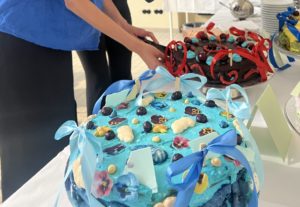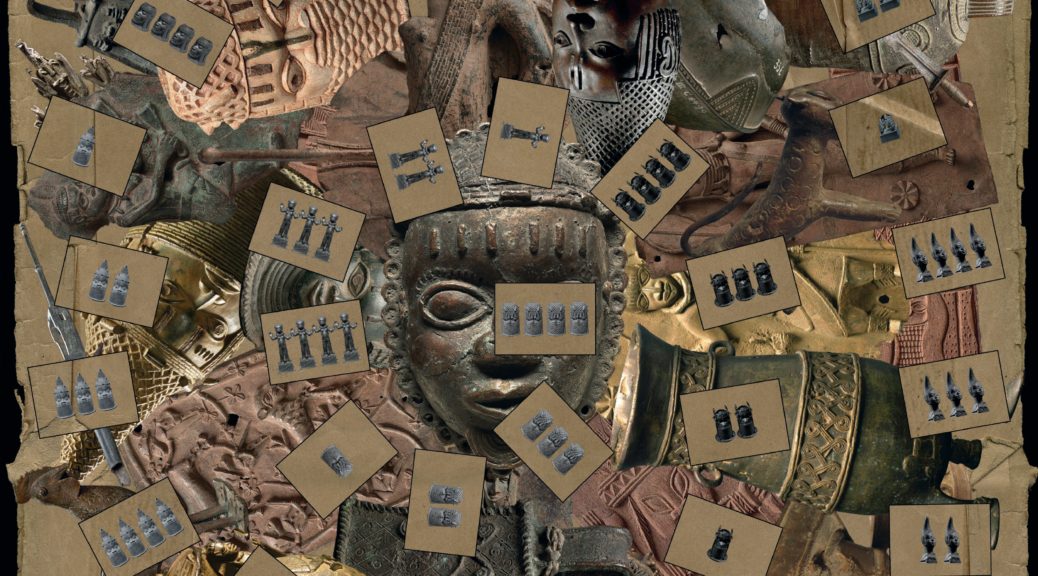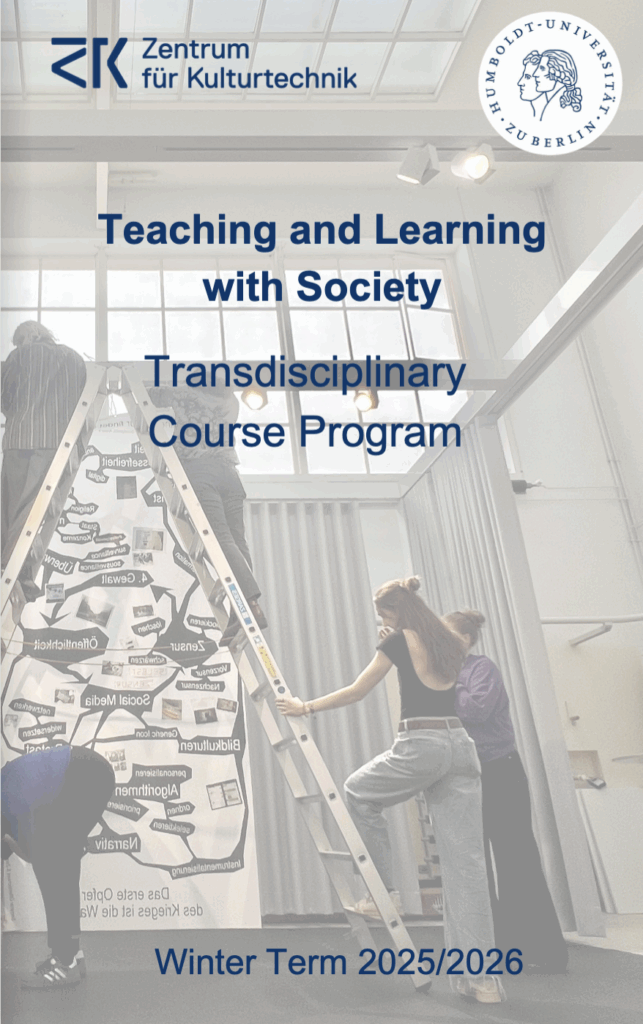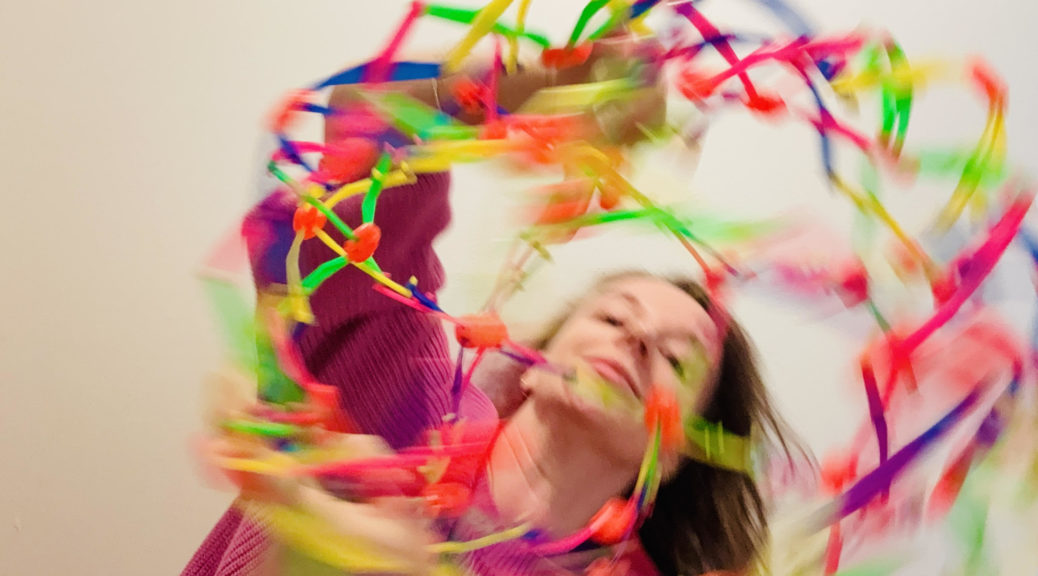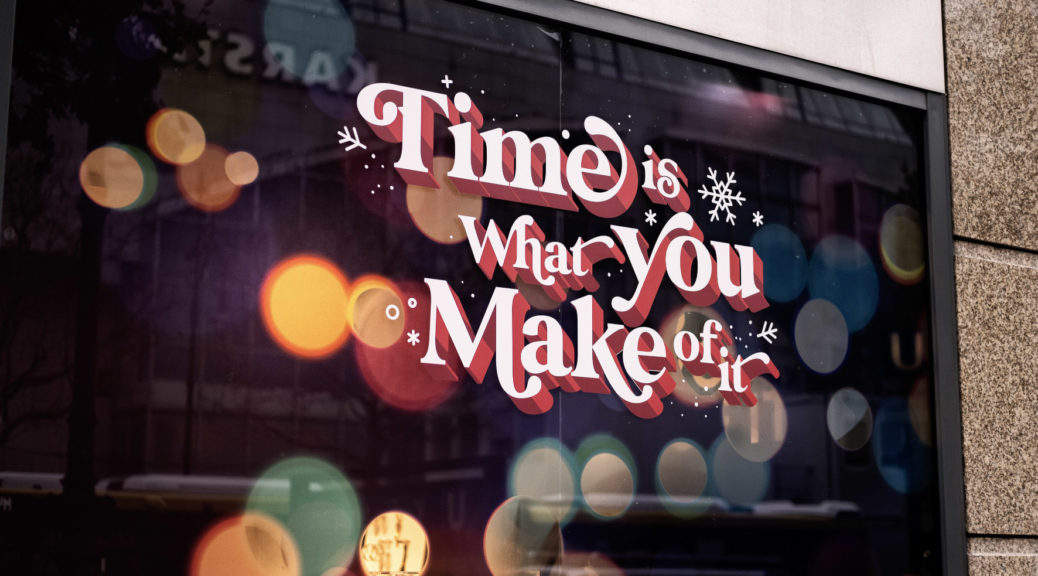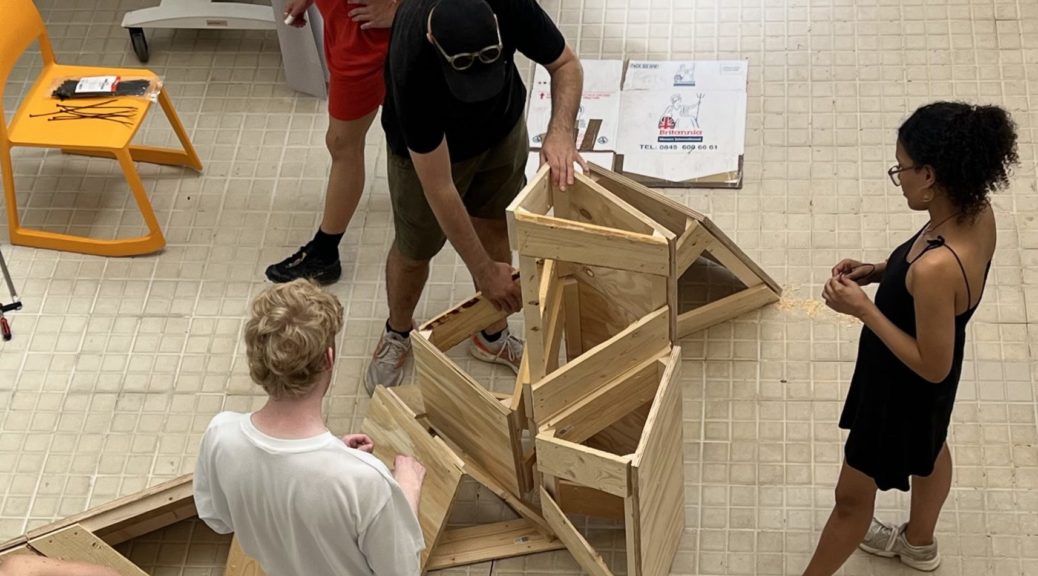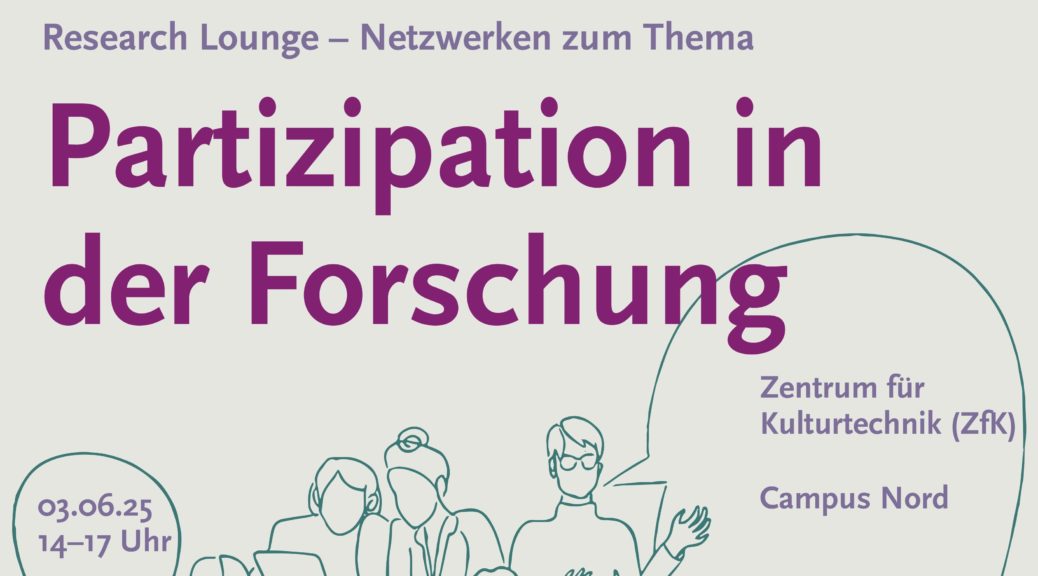Insights into the Program “Learning and Teaching with Society”
The following interview was conducted by Marlene Lüdorff, who is a student assistant at the Centre for Cultural Techniques, with Vincent Leonhardt, a participant in the ‘Overloaded: Interimperial Entanglements of Material and Photographic Collections’ seminar in August 2025. The seminar, which was held in the summer term 2025, was run by Prof. Dr. Magdalena Buchczyk, Dr. Hanin Hannouch (Weltmuseum Wien) and Anna Szöke (Ethnological Museum Berlin) at the Institute for European Ethnology. It was supported by the Learning and Teaching with Society funding programme from the office for „Knowledge Exchange with Society” at the Centre for Cultural Techniques, which made especially the closing event, Café Interimperial, possible.
Marlene Lüdorff: Could you tell me what the seminar Overloaded: Interimperial Entanglements of Material and Photographic Collections was about, and how this led to the idea of Café Interimperial?
Vincent Leonhardt: The Overloaded project focuses on the archives of European museums, demonstrating how imperial ‘baggage’ continues to impact collection practices. It explores the historical interconnections between the various colonial empires and their interimperial workings. It also considers the extent to which these connections strengthen the imperial system as a whole. During the seminar, we collaborated with the Weltmuseum Wien and the Ethnological Museum Berlin, examining various archival materials.
The idea for Café Interimperial emerged from the requirement for each seminar student to conduct a research project. This work always began with pieces from the archive and museum, providing a practical approach. With Café Interimperial, we wanted to present an exhibition of pieces that could be displayed in a museum and which would give visitors a broader perspective on historical events. Thanks to the Learning and Teaching with Society funding programme we were then able to present the Café Interimperial as a way of displaying the research results. Inspired by a Viennese coffee house, the Café Interimperial exaggerated the imperial aspect, creating a stark contrast with our postcolonial research. This created an interesting tension between the exhibition space and our research results.
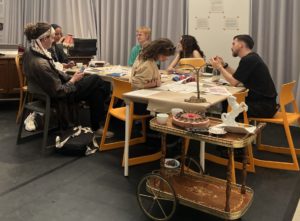 How did you apply the ‘Learning and Teaching with Society’ programme approach to the seminar? In what ways did you engage with questions, knowledge and experiences from society?
How did you apply the ‘Learning and Teaching with Society’ programme approach to the seminar? In what ways did you engage with questions, knowledge and experiences from society?
It’s basically about understanding this colonial heritage and working with it, which is also one of the main topics at our Institute for European Ethnology. An example of this is the recent renaming of M-Straße to Anton-Wilhelm-Amo-Straße, a process that took many years to complete.
We also engaged in this social discourse. How did we come into contact with the questions, knowledge and experiences of society? Through our cooperation with the Objektlabor (at the Centre for Cultural Techniques) basically. This gave us the opportunity to facilitate a large-scale exchange with all kinds of people through Café Interimperial, and everyone was able to participate. This exchange was also very helpful for my project.
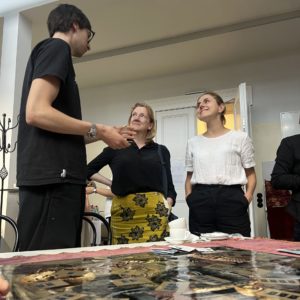
What topic or object did you focus on in the seminar, and how did you come across it?
I focused on postcolonial mediation through playful approaches, using the restitution of the Benin Bronzes as an example. I decided to develop a decolonial board game. The restitution and reinterpretation of colonial artefacts, such as the Benin Bronzes, remains a central issue. These bronzes were looted by British troops from the Kingdom of Benin (now Nigeria) in 1897, and are now in many European museums, including the Ethnological Museum in Berlin. Restitution has now begun there, with the cultural objects being returned and remaining on loan to the museum.
How did I come up with the idea? It began with a study of the Idia Iyoba, a commemorative statue of a queen mother. This is one of the star attractions of the Benin exhibition at the Ethnological Museum. First, I looked into its provenance, and then the idea developed from there. I wanted to do something more practical, and I had already developed a board game during my Bachelor’s degree. After receiving lots of feedback, I finally created a decolonial quartet comprising 32 cards. Each set of four cards features a Benin bronze, telling its own story. I applied Saidiya Hartmann’s theory of critical fabulation, a narrative technique that fills gaps in the histories of colonised societies with speculative narratives. Using this method, the eight objects from the Benin exhibition in Berlin can speak and tell their stories. Each quartet uses four cards to cover the origin, colonial looting, present and imaginative future of the respective object. By collecting a quartet, players can learn the story of Queen Mother Idia Iyoba, for example, from her own perspective.
When I imagined the future, I considered different possibilities. For example, I imagined a cultural object that had been separated from its home country for so long that it had lost its will to live and was falling apart. Then there are also many objects in the Dahlem archive that no one can see. It may well be that these objects will never be seen in the future and will feel very lonely. However, I also considered other possibilities. Some pieces have already been returned to Nigeria, for example, and I presented this perspective too. I also presented a perspective in which all stolen artworks have been returned and are now in a museum. I used a character who criticises me as a student and researcher to demonstrate that I must treat these stories with care as a student, as they are not my history. However, through this colonial legacy, they are also my history, albeit from the perspective of the guilty party.
In Quartet, players swap cards. However, the game is designed to be decolonial because there is no winner. The aim is simply to collect cards and form quartets, which can then be read out loud. The cards also complement each other visually. As you play, you fill up the game board with cards. In doing so you also lay down your knowledge, I mean you retain it, but you also put the value of the object where it belongs, so to speak.

How can we imagine the exhibition of your project at Café Interimperial?
As students, we presented most of our research results in a multimodal way, so you can imagine it like this: I had a table displaying this board game, and visitors could sit down at the table. Once there were enough visitors, they could play the game and quiz each other using playing cards. Through this interaction, I, as the researcher, was able to learn more about my research and research question, and the visitors were able to learn more about Germany’s colonial heritage, providing them with food for thought. I also received a lot of positive feedback and identified areas for improvement in the game. It was a steep learning curve. Since Anna Szöke was also part of the seminar, I had the opportunity to display my game in the Room of the Benin Bronzes at the Ethnological Museum for a day. I went there on a Saturday and spent the whole day playing with people and talking to lots of visitors. It was a really good experience.
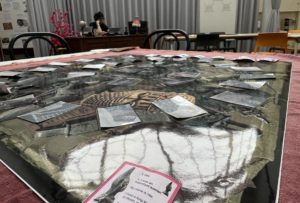
Could you briefly describe the general response of visitors to the game exhibition at the Ethnological Museum and the object lab at the Centre for Cultural Techniques?
The response has been consistently positive. However, at the museum where I was, for example, I encountered a much wider range of audiences, many of whom expressed critical views about restitution. They argued that these works are German cultural assets and that German museums take very good care of them. It was interesting to hear these different perspectives. These are very real perspectives which can also be seen in the political debate in the Bundestag, for example. It was interesting to discuss this with visitors and perhaps even change their minds.
One encounter in particular has stuck in my mind: an encounter with an elderly man. He looked at one of my cards. I remember talking to him about the game, and then about the card itself. He said that, because the card spoke to him so personally, he believed that restitution was a good thing and that all the figures should be returned. This confirmed to me that my playful approach can actively influence opinions and that I am on the right track.
What has happened with your project since Café Interimperial, and do you have any plans for how it will continue?
Yes, I am still in contact with the Ethnological Museum about continuing to play my game there on various days. For example, there is always a guided tour on Sundays where more time is spent in the room of the Benin Bronzes. This gives me the opportunity to meet people who are genuinely interested in the topic and are joining a guided tour. I have already invested a lot of time in this game, which is why I would like to write my Master’s thesis on the mediation of postcolonial heritage using playful theories.
Other than that, the people I met at the museum have given me the opportunity to start an internship at the Ethnological Museum. This will allow me to delve deeper into the subject and bring me closer to my professional future. The Ethnological Museum has provided tremendous support, motivating me to invest my time in this endeavour. I do not intend to put this project aside now, but would like to develop it further and continue exhibiting it. I would also like to apply for an exchange scholarship to Nigeria, for example, to collaborate actively with Nigerian museums on the project, as I enjoy this field of mediation very much.
Is there anything else you would like to say?
I would like to thank Prof. Dr. Magdalena Buchczyk, Dr. Hanin Hannouch and Anna Szöke for their excellent leadership of the seminar.